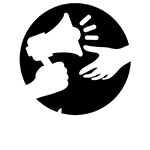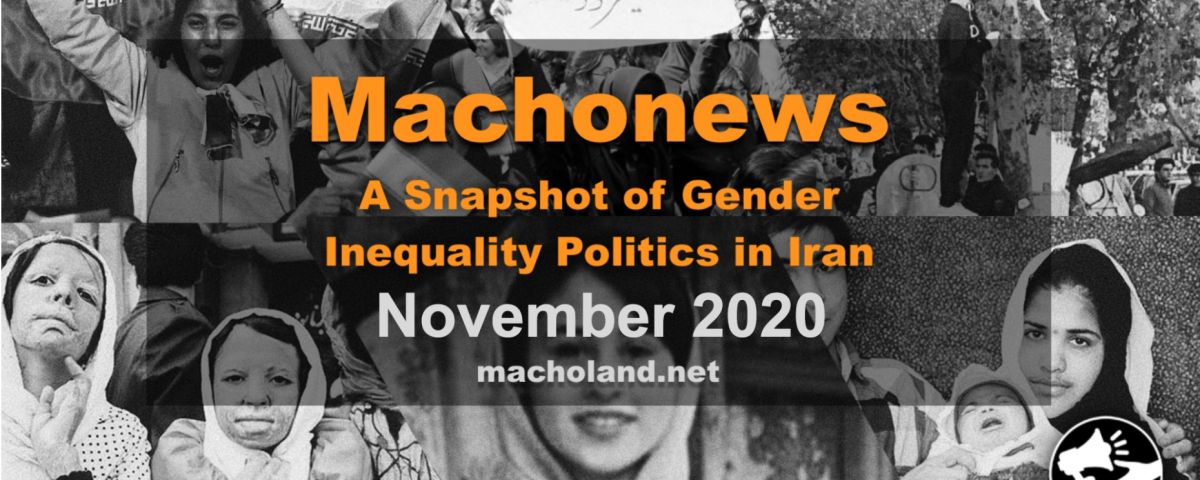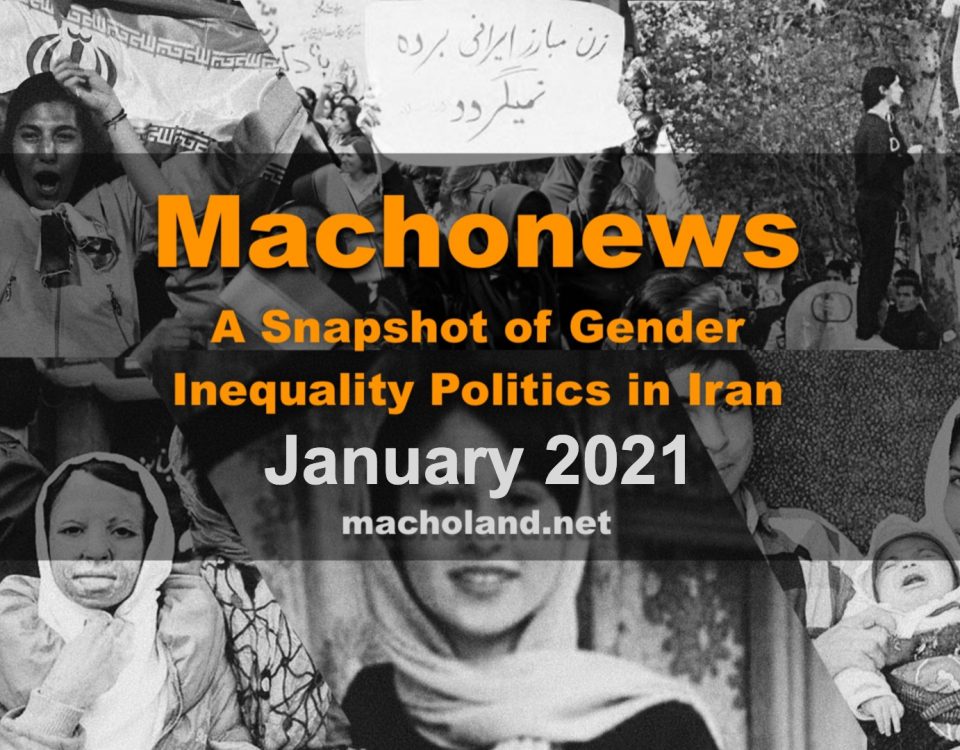Machonews November 2020: A Snapshot of Gender Inequality Politics in Iran

ماچونیوز ۱۹۵: تفکیک جنسیتی گورستان کلاردشت، ممنوعیت صدور گواهی بکارت در فرانسه
11 دسامبر 2020
ماچونیوز۱۹۶: ازدواج ۷۰۰۰ کودک ایرانی در بهار ۱۳۹۹, محکومیت هدی عمید و نجمه واحدی به زندان
18 دسامبر 2020This is the November 2020 Machonews, a monthly report covering the most significant gender and women’s rights related events and policies in the Islamic Republic of Iran. This monthly article is produced by Macholand, a project by Spectrum, a queer-feminist NGO (Association 1901) based in France.
Prioritizing Population Growth Over Women’s Rights
Recent announcements have shown that the Iranian government prioritizes population growth over women’s reproductive rights. Morteza Aghatehrani, a member of parliament in Iran, has announced a new parliamentary plan to prevent abortions with the intent to increase the population. Aghatehrani said that abortions in Iran have had 20 to 30 times the casualties of the coronavirus; this figure has not been proven, nor is an official metric.
While all officials are working to increase Iran’s population, Jalal Mahmoudzadeh, Mahabad’s representative in the 11th parliament, criticized Iran’s population growth policies, saying that under the current financial and political situation, young people are forced to leave the country due to a lack of employment. Whereas, Ali Khamenei has repeatedly warned executive officials about the slowed population growth since 2013. Khamenei wants Iran to have a population of 150 million, almost double now.
As unsafe abortion numbers rise, the government is also attempting to prevent men from using contraceptive procedures to maximize population growth. Many unintended contraceptive services have been banned in Iran, in line with Ali Khamenei’s orders. For example, vasectomy and tubectomy, which were once performed free of charge, are prohibited. The judiciary can revoke doctor’s work permits if they perform these procedures.
Following these policies, Meimanat Hosseini Chavoshi, an Iranian-Australian demographer, was sentenced to 10 years in prison on charges of collaborating with foreign countries and “acting against national security” by trying to reduce the birth rate. In 2016, Homa Hoodfar, a professor at Concordia University in Canada researching population growth and women’s rights, was arrested. The “elimination” of these researchers clearly shows that the Iranian government isn’t willing to recognize women’s rights over their bodies.
One of the most controversial news articles published last month was a statistic announced by Shahla Kazemipour, a demographic activist, who said the country’s population of housewives was growing. According to her, women active in the workforce make up 13% and women not active in the formal workforce make up 87% of the country’s total female population. This increase in the population of housewives is also a continuation of the Islamic Republic’s policies, which indicate that women’s main role is motherhood and housekeeping and hold them responsible for increasing the population. The above terms are used by officials to categorize the female workforce.
Protest Erupt Amid Entrance Exam Results
The publication of the national entrance exam results for universities in Iran was once again met with protests from women. Additionally, this year, the gender quotas have once again prevented many women from being accepted into their chosen field. The few years of implementing these gender quota policies has led to the elimination of women from the money-making disciplines. It has led them to choose majors that are considered to be appropriate to female gender stereotypes.
However, Ebrahim Khodaei, the head of the country’s assessment organization, announced that more than half of the university seats in the 2020 national entrance exam belong to women. As the protests escalated, the Education Ministry stated that there were no restrictions on the admission of women to universities or women choosing a major at any university other than single-sex universities, special or employment universities, such as military universities, but in practice, these unwritten restrictions continued. Despite the number of educated women increasing, there has been no increase in the number of working women.
Update on the Aghdashloo Case
Last month’s New York Times report on Aydin Aghdashloo provoked reactions. Among them is Hormoz Hemmatian, the founder of the Dastan Art Gallery in Tehran, who said that the solo exhibition of Mr. Aghdashloo’s works, which was to open at the gallery, was canceled by the artist’s representatives a few days after the first accusations were posted on Iranian social media. The Tehran Auction, an annual and important gathering for Iranian art that highlights Aghdashloo’s work every year, has also said that two of his paintings may be removed from the auction, which 12th edition is likely to take place on December 11, 2020.
The #MeToo movement continues on social media in Iran. A senior Iranian journalist has been charged with sexual harassment, as 23 female journalists have confirmed the sexual harassment of one of the journalists in published statements.
Women and Youth in Managerial Positions
The Court of Administrative Justice annulled the decision to prioritize the appointment of women and youth to managerial positions. This was one of the few steps taken by the Rouhani government to recognize the rights of women and youth to facilitate their entry into the country’s managerial arenas.
In response, the Vice President of Women and Family Affairs, Masoumeh Ebtekar, said that a restrictive, narrow-minded, and negative view of women, and anger over the government’s increase in hope among women and youth, would not harm the government’s work routine. This is a subject of Ebtekar’s propaganda in support of gender justice. She made the remarks while the promise of allocating 30 percent of managerial positions to women was not fulfilled in nine months before the end of Hassan Rouhani’s government.
Update on Nasrin Sotoudeh
Nasrin Sotoudeh has been put on leave. Reza Khandan, Sotoudeh’s husband, also confirmed the news. The 57-year-old lawyer is in critical condition and just two days after her release she tested positive for the coronavirus. Several members of the German parliament are calling for Nasrin Sotoudeh to be released.
Government Spending on the Hijab
With the Iranian presidential election approaching, the issue of women in government has once again come to politicians’ attention. Referring to the laws related to compulsory hijab in Iran, former-president Ahmadinejad said: “If the parliament has passed a law and the majority of the society says I do not accept it, can you say that I will apply at any cost?” This comes at a time when Mahmoud Ahmadinejad has made no effort to improve the situation of women during his eight years in office. He appointed Marzieh Vahid Dastjerdi as the first female minister after the revolution but fired her before the end of her presidency.
As Hassan Rouhani’s government complains about the pressure of sanctions on Iran, $250 million worth of cloth, used to create hijabs, is imported into Iran annually. The Deputy Chairman of the Parliamentary Industry Commission said that out of about 90 million square meters of chador fabric consumption in the country, only ten million square meters are produced domestically, and 80 million square meters are imported. This comes after the government said that they do not have sufficient money to provide Iranians with medications and other necessary needs. The use of black chadors is mandatory for female employees in many offices of the Iranian government.
Iranian women have been protesting against the forced hijab for years and ignoring government laws. The Islamic Republic has set up special police forces to deal with these women, and thousands of women face charges of non-compliance with the mandatory hijab every year.



